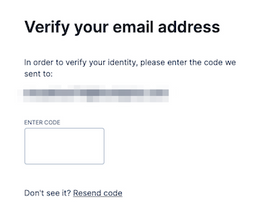Email Validation in PHP: Best Practices and Tips

Email Validation in PHP: A Complete Guide
In any web application, validating user inputs is critical, especially when dealing with email addresses. If you’re building a website or application that requires users to sign up or contact you, ensuring email addresses are valid helps prevent issues with fake or mistyped emails. In this guide, we’ll explore various methods for implementing email validation in PHP to make your application more secure and reliable.
Why Validate Emails?
Email validation serves two main purposes:
- Data Quality: Verifying email addresses ensures that the user data you collect is accurate, reducing typos and fake entries.
- Security: Validating email addresses minimizes vulnerabilities, protecting against spam, malicious links, and invalid data.
How Email Validation Works in PHP
PHP offers several methods to validate email addresses, ranging from simple regular expressions to more complex methods using filters. Let’s explore the key techniques.
1. Using Regular Expressions for Email Validation
One common approach to validate email addresses in PHP is through regular expressions (regex). Regular expressions allow you to define a specific pattern to match valid email addresses. Here’s an example:
This regex pattern checks for the typical structure of an email address: a combination of alphanumeric characters and symbols like underscores, followed by an @ symbol and a domain name. While regex can be powerful, it may miss some edge cases or allow certain invalid emails.
Pros and Cons of Using Regex
- Pros: Customizable and flexible.
- Cons: Can be complex and may not catch all invalid email formats.
2. Validating Emails with PHP’s filter_var() Function
A simpler and more reliable approach is using PHP’s built-in filter_var() function, which includes a filter specifically for email validation. Here’s how it works:
The filter_var() function is a straightforward way to ensure an email address meets standard formatting rules, without needing custom regex.
Pros and Cons of Using filter_var()
- Pros: Easy to implement and reliable for basic validation.
- Cons: Doesn’t verify whether the domain exists or if the email is deliverable.
3. Advanced Validation: Checking Domain Existence
To take validation further, you can check if the domain part of the email exists using PHP’s checkdnsrr() function. This ensures the domain in the email (like domain.com) is valid and exists.
This code extracts the domain from the email address and uses checkdnsrr() to see if it has a Mail Exchange (MX) record, which is necessary for email delivery.
Pros and Cons of Checking Domain Existence
- Pros: Reduces invalid emails by confirming the domain.
- Cons: Slightly slower, as it performs a DNS lookup.
4. Combining Validation Techniques
For robust validation, you can combine filter_var() with domain verification using checkdnsrr():
This method provides comprehensive validation by checking both the format and domain existence, giving you a higher confidence level in email accuracy.
Practical Example: Validating Emails in a Registration Form
Here’s an example function you can integrate into a registration form to validate email addresses before they are saved to your database:
In this code, the function validateEmail() verifies the email format and domain, outputting messages that are easy to integrate into your application’s front end.
Handling Edge Cases in Email Validation
When validating emails, it’s essential to handle some common edge cases:
- Subdomains: Ensure emails with subdomains (e.g.,
user@mail.example.com) are correctly validated. - + Symbols: Some email providers allow tags using a
+symbol (e.g.,user+tag@example.com). Make sure your validation doesn’t reject these valid formats. - Top-Level Domains: Accept emails with new TLDs like
.techand.guru. - Length Limits: Be aware of email length limits (generally 320 characters), and set appropriate constraints in your database.
PHP Libraries for Email Validation
If you want to simplify the validation process further, several PHP libraries provide advanced email validation capabilities. Libraries like Egulias EmailValidator offer more extensive validation by covering syntax, domain, and even SMTP checks.
To use Egulias, you can install it via Composer and quickly implement comprehensive validation:
Then, implement it in your code:
Conclusion
Validating email addresses is essential for ensuring data accuracy, improving application security, and reducing spam. PHP provides several ways to validate emails, from basic filter_var() to advanced domain checks and specialized libraries. By combining these methods, you can ensure only valid emails are accepted in your application.
Following the practices outlined here will help you achieve reliable email validation in PHP that enhances the overall user experience and protects your application. Start with the method that best fits your needs and consider using a library if you require more robust validation.







